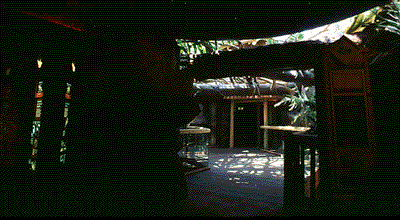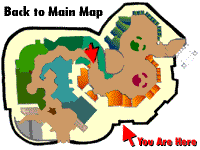Proceeding through the cavern-like trunk of the Baobab Tree one will see evidence of the cycle of life in the African savanna that is dependent on this magnificent tree. The Baobab bears the scars of fire which periodically engulf, but do not destroy, this tree in its vulnerable habitat. Thirsty elephants frequently gouge the base of the tree to extract its moist pulp. The female Hornbill nests in a crevice in the tree during the rearing of her young. She constructs a virtually impenetrable fortress by adding clay which hardens around the entrance and allows only a tiny opening through which food is passed from her mate. Weaverbirds construct elaborate nests that hang precariously from the highest branches to discourage snakes and other predators.
Fruit Bat colonies can be located within the tree. These bats find the tree's large six-inch flowers an excellent source of food. The Baobab is also called the "Monkey Bread Tree" because baboons eat its large, elongate pulpy fruit.
The Baobab Tree is one of the largest (around) and longest lived trees in the world, thought to live up to 2,000 years.
Animals
- Straw-colored Fruit Bat
- Mountain Fruit Bat
- Fennec Fox
- King Baboon Spider



